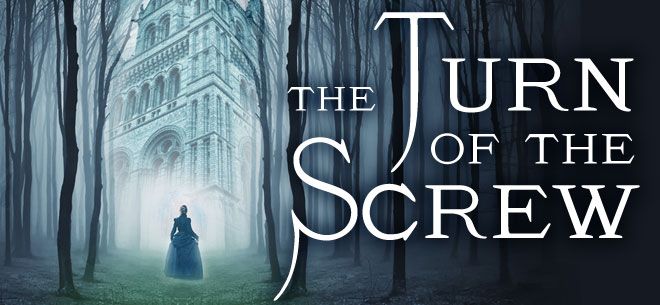 The Turn of the Screw was written by Henry James more than a century ago (1898). It may seem redundant to some, or even futile, to attempt yet another assessment of this short and most unpalatable little book. It has already suffered many times its own length in criticism by some of the best literary minds to have produced themselves in the period since it was written, so why bother? This is a pertinent question, but answerable by anyone with the stubbornness to wade through this comparatively large, divergent, and rather “heady” bloc of criticism. He will see that though prior analysis has intelligently and brilliantly exposed much of the art by which James has expressed himself, it has been frustratedly unable to divest itself of any information whatever toward an understanding of just exactly what he was expressing. This has left the meaning of the book as much a mystery today as it was more than a century ago when it first appeared in serial form in Colliers magazine.
The Turn of the Screw was written by Henry James more than a century ago (1898). It may seem redundant to some, or even futile, to attempt yet another assessment of this short and most unpalatable little book. It has already suffered many times its own length in criticism by some of the best literary minds to have produced themselves in the period since it was written, so why bother? This is a pertinent question, but answerable by anyone with the stubbornness to wade through this comparatively large, divergent, and rather “heady” bloc of criticism. He will see that though prior analysis has intelligently and brilliantly exposed much of the art by which James has expressed himself, it has been frustratedly unable to divest itself of any information whatever toward an understanding of just exactly what he was expressing. This has left the meaning of the book as much a mystery today as it was more than a century ago when it first appeared in serial form in Colliers magazine.
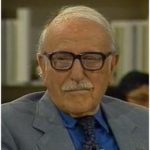
The Turn of the Screw is perhaps unique in this way. Many other literary works of art are re-read or re-studied, and if they are great works there is always something new to be found, or at least reinterpreted according to the times. However, the main points, the major premises, and the overall themes of these works will always avail themselves, in differing degrees, to an initial and enduring understanding or feeling. Such is not the case with The Turn of the Screw. This terse collection of literary incoherencies disguised as a book has been attacked from almost every conceivable angle; it has been scraped, sliced, dissected and placed under the powerful mental microscopes of the most discerning and intelligent critics and is ever again and always found hopelessly wanting in anything thematically worthwhile, sound or whole. The evil that James infuses into us so amusedly through this book has never been justified or dispelled. Any sense whatever to the book continues to nimbly and lightly escape us. This fact has been so discon-certing over the years that Mr. Leon Edel, perhaps the most persistent critic of this piece, has written, “When criticism throws up its hands in bewilderment over the work of an artist or wavers between such extremes [of opinion], it is reasonable to inquire whether the work in question is really art”.1 And, indeed, though Mr. Edel, the foremost biographer and critic of James, is the only one to state it with such courageous bluntness, this seems to be the general consensus of opinion of the more intelligent later criticism as it continues to come up empty handed from its efforts to sift something of value from all the muddling ambiguity of the book.
But of course it is art. There is just too much standing in the way of it not so being. Not only has the book itself stood these many years so curiously indispersable, but the entire career of James speaks against this tale being as limited as we have seen it. And of course there is some meaning other than the ghastly consequential summations of former criticisms, for James was no madman and would not subject us to a view of something so ugly without a glimpse of something in the other direction. James was in no sense of the word evil, ugly, or stupid; in fact we have known him through his other writings to possess the exact opposite qualities, but we also know him to be extremely subtle with a rather profound sense of the ironic. When we add together all the extrinsic data, we just can’t relieve ourselves of the suspicion that this must somehow be his greatest trick, so we persist in our search for “…the small strength…the unattackable ease – of a perfect homogeneity of being, to the very last grain of its virtue, all of a kind.”2
And yet, for any sense of the tale to have eluded us for so long, it must be rather unique, perhaps without comparison, and we begin to guess that our exploratory methods are going to have to be equally unique. Our overdeveloped mental muscles have failed completely to dissipate the ephemeral black cloud of this story that hangs over our heads, and our clever inventiveness has taken the raw material given us by James and been able only to erect evil, ugly, destructive creations. As James noted in his preface to The Turn of the Screw, “Nothing is so easy as improvisation, the running on and on of invention. It is sadly compromised, however, from the moment its stream breaks bounds and gets into flood. Then the waters may spread indeed, gathering houses and herds and crops and cities into their arms and wrenching off for our amusement, the whole face of the land…”3 Though he was speaking of a course which he himself strongly wished to avoid in writing this tale, this statement serves as a rather prophetic indicator for what we have so far seen as our course in its analysis. It was part of his plan, of course, that we should do our share of the work in the development of this tale, but it was his greater plan for us, his readers, failing as miserably and completely as we have in the development of anything worthwhile, to turn back again on ourselves – in an ironically antithetical manner to which the story turns back on itself for its confusion – for a proper and clear understanding of it. This will require a sort of shift from the mentality to which we are used for the solving of problems in a more conventional novel.
The Turn of the Screw is perhaps unprecedentedly bold. It mentally piques and irritates us without allowing us the slightest satisfaction. It is stark, austere and dry; it possesses no clever witticisms, no sense of humor, no internal ironies, no sex or violence (on a sensual level, at least), and, in general, no real life. Other past authors who we know to be profound seem never to exclude several intermediate levels of understanding and entertainment.
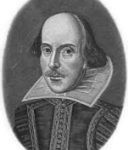 Shakespeare, for instance, is probably still the wonder of wonders for the levels to which he could rise and fall without ever offending or intimidating anyone (well, he may have offended a Jew or two with The Merchant of Venice, but he seems to have gotten away with it [added 12/29/2016]). And if he ever presents us with a mystery that we can’t solve, it is somehow overlooked for all those that we can.
Shakespeare, for instance, is probably still the wonder of wonders for the levels to which he could rise and fall without ever offending or intimidating anyone (well, he may have offended a Jew or two with The Merchant of Venice, but he seems to have gotten away with it [added 12/29/2016]). And if he ever presents us with a mystery that we can’t solve, it is somehow overlooked for all those that we can.
 Of recent authors John Fowles perhaps matches James in thematic boldness (especially The Magus, and The French Lieutenant’s Woman), but there is always enough relative art and internal mystery in his works to distract the reader from the ultimate, external mystery that he propounds. This leaves his pieces, though perhaps as profound, not quite as insistent as this particular work by James. [2016 – Fowles book The Magus is listed #93 in Random House’s picks of the 100 greatest books of the Century, a listing I would bump quite a few places up. And while finding 3 of Henry James’ books in this list, I was disconcerted to not find The Turn of the Screw, until it dawned on me that this book came out first in 1898].
Of recent authors John Fowles perhaps matches James in thematic boldness (especially The Magus, and The French Lieutenant’s Woman), but there is always enough relative art and internal mystery in his works to distract the reader from the ultimate, external mystery that he propounds. This leaves his pieces, though perhaps as profound, not quite as insistent as this particular work by James. [2016 – Fowles book The Magus is listed #93 in Random House’s picks of the 100 greatest books of the Century, a listing I would bump quite a few places up. And while finding 3 of Henry James’ books in this list, I was disconcerted to not find The Turn of the Screw, until it dawned on me that this book came out first in 1898].
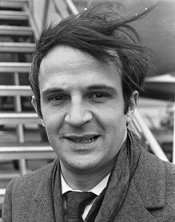 The French film maker, Francois Truffaut, in one of his later films, The Last Metro, cannot be said to have not matched James in subtlety of theme and superb understanding and control of his medium, but the film, with its sumptuousness, is not quite as piquing (though it really couldn’t be said to suffer from it). In any case, we are always, either consciously or unconsciously, allowed by the author certain avenues of escape by which we can rationalize our lack of understanding. Really, who could think of much else with Catherine Deneuve so predominant throughout the film.
The French film maker, Francois Truffaut, in one of his later films, The Last Metro, cannot be said to have not matched James in subtlety of theme and superb understanding and control of his medium, but the film, with its sumptuousness, is not quite as piquing (though it really couldn’t be said to suffer from it). In any case, we are always, either consciously or unconsciously, allowed by the author certain avenues of escape by which we can rationalize our lack of understanding. Really, who could think of much else with Catherine Deneuve so predominant throughout the film.
Whether the merits of this are arguable one way or the other, it is at least of high interest that The Turn of the Screw exists uniquely, boldly, and mercilessly void of any such provision. It is a “trap for the wary and the unwary alike”4 with no back door. It has stood its ground for over a century on the merits of its author, life, our bold faith in both, and our subconscious conviction that there absolutely must be something more to this story than we have as yet been able to perceive. And so, focusing ever more intensely, we continue to search in hope of a clearer vision of this “truth” that James stated was in the back of his mind.
The forthcoming analysis, though it hopes for a certain sort of completeness, is quite incomplete as a discussion of the story as a whole and, in fact, is somewhat dependent upon a rounded exposure and an awareness of the problems of the book either as advanced by former critics, or as originally extracted from the story by a reading of it with the attention which James considered us worthy. And though this analysis discusses some of the art, it only touches upon certain aspects of it which it considers important in the solution of the enduring consciousness problem and it would be a sad thing for the reader to limit himself to this narrow, though interesting, part of the artistry. Moreover, if we believe James when he said that he was writing a story in which the reader must do his share of the work, we must, in a way, consider all criticism of the story actually a part of it. This, of course, isn’t exactly true, and an understanding can be achieved solely from an original reading, but it would be a rare original reader who could be as variant in his ingenuity as have been former critics collectively, and it would be a definite loss to the story for the reader not to be aware of their interpretations.
Because this novelette returns to itself at all points so completely, it would perhaps be as well to start a discussion of it anywhere within as we would eventually wind up with a discussion of the whole. However, for the sake of convention and ease of description, we may as well start at the beginning – the prologue.
Several critics have ascribed a certain importance to this portion of the book, but in the face of the governess, her intensity, and the immediacy with which she tells her tale, it seems still that the provisions set forth in it, which are so vital to the sense of the story as a whole, have not been carried forward with adequate attention.
From the very beginning we have several conditions of which we must be constantly aware. First of all it is instructive to be aware of exactly how, and from whom, we are receiving this tale. It is not the governess telling it; she had written it down years ago and has since died. Nor is it Douglas telling us the story, for as much as it may seem that we are part of the group gathered round the fire, he also has died at some indeterminable time in the past and has, before so doing, passed the manuscript along to a friend. So, regardless of what appears to be the situation, we see that the “buck” has been passed with many noble credentials, assurances of veracity, and in the most serious and desperate of ways (the deaths of the governess and Douglas, respectively) to a nameless and rather mysterious first person narrator about whom we wish we knew a little bit more.
Also, it is not now from the red portfolio whose pages were inscribed with the beautiful hand of the governess that we are having the account, but from what we are assured, by this nameless person, to be an exact transcript. And, of course, he/she is assuring us of this at a time, though we are never told precisely, which appears to be considerably after the narration or reading round the Christmas fire. This brings us to an awareness that the conditions under which this prologue was written are curiously similar to those under which the tale itself was written by the governess – namely, that of writing from memory well after the actual occurrence, and well after even the reading round the fire. When we read the quoted words of Douglas we may think he is actually speaking, but what we are actually hearing is the memory, to whatever degree we can trust it, of this unknown narrator. We also interestingly note that much of the pre-setting for the story – facts about the governess, the master, Bly, etc. – is not even given in quotes as coming from Douglas himself, but is given directly to us by this person who was displaced rather considerably by time and was in no way directly connected to any of the events or characters in them.
It would greatly relieve us if we could say with certainty that this narrator was James himself and there are a few indications that tantalizingly point toward this being the case. On the other hand, we have some equally weighty evidence pointing in the opposite direction. If we do assume it to be James, it might be asked just what allowances literary convention provides for authors to intermingle with their fictitious characters and vouchsafe things within this fiction which we have every reason to believe were quite different in reality – namely, the source of the tale. However, if we assume it not to be James, it might prove a difficult task to find a similar situation in the history of literature where the identity of a first person narrator is left so provocatively open, if not actively leading toward an identification of the very author of the book. So, it is somehow a question, for if it were not meant to be so, the narrator most definitely should have been named – there would have been no harm in doing so. Yet we wonder on what authority, and to what purpose, does James allow himself to leave this question to a conjectural interpretation – taking us so provocatively near, but leaving us so irritatingly disconnected to any final authority?
There is more here in the prologue, some of which we will come back to later, but for the sake of getting on to the tale, let’s sum up what we have so far. An event takes place. Eight or ten years later, the governess, who took part in this event, writes of it from memory at, or about, the same time she narrates the tale to a young Douglas. Twenty years pass and the governess, anticipating her death, passes her manuscript on to Douglas 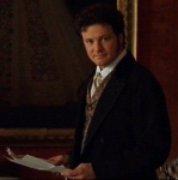 and then dies. Twenty more years pass and Douglas finally breaks his long reticence and reads the story to a group of crones one Christmas round a cozy fire. An indeterminate number of years later, though seemingly not too few, Douglas passes the manuscript along to one of the people who attended the Christmas reading and then himself dies. This person finally, after another lapse of time, the duration of which we have absolutely no clue, passes the tale along to us in the form of a copy of what we are assured is an exact copy of the original manuscript (we wonder why he/she needs this other copy) along with a prologue he has written himself from his memory of the retelling of this tale written from memory. We are strongly led to believe this person is James himself by his tone of intimacy and authority, his allusion to having a title for the tale, and his lack of bother to name himself. In one sentence he seems to be assuring us beyond doubt that he is James…and that he is not: “Let me say here distinctly to have done with it, that this narrative (italics mine), from an exact transcript of my own made much later, is what I shall presently give.” In other words, by assuring us of this very story we are about to read, presumably on these very pages which occupy time and space in reality, he is assuring us that his authority, his title, and his book are one and the same with James. At the same time he is confirming our belief that their sources for the tale are completely different, as we know from reading elsewhere the direct words of an undisputed James. So now, atop all the gaps, lapses, and transmigrations of time, authority and reliability, we have a sort of unformable, yet quite acute, consciousness problem in regard to the identity of the ultimate source of the tale.
and then dies. Twenty more years pass and Douglas finally breaks his long reticence and reads the story to a group of crones one Christmas round a cozy fire. An indeterminate number of years later, though seemingly not too few, Douglas passes the manuscript along to one of the people who attended the Christmas reading and then himself dies. This person finally, after another lapse of time, the duration of which we have absolutely no clue, passes the tale along to us in the form of a copy of what we are assured is an exact copy of the original manuscript (we wonder why he/she needs this other copy) along with a prologue he has written himself from his memory of the retelling of this tale written from memory. We are strongly led to believe this person is James himself by his tone of intimacy and authority, his allusion to having a title for the tale, and his lack of bother to name himself. In one sentence he seems to be assuring us beyond doubt that he is James…and that he is not: “Let me say here distinctly to have done with it, that this narrative (italics mine), from an exact transcript of my own made much later, is what I shall presently give.” In other words, by assuring us of this very story we are about to read, presumably on these very pages which occupy time and space in reality, he is assuring us that his authority, his title, and his book are one and the same with James. At the same time he is confirming our belief that their sources for the tale are completely different, as we know from reading elsewhere the direct words of an undisputed James. So now, atop all the gaps, lapses, and transmigrations of time, authority and reliability, we have a sort of unformable, yet quite acute, consciousness problem in regard to the identity of the ultimate source of the tale.
Of course none of this is proof one way or the other of anything, but we certainly feel we are on somewhat insecure ground and we only hope that what we will go on to read will be less confusing and more straight forward.